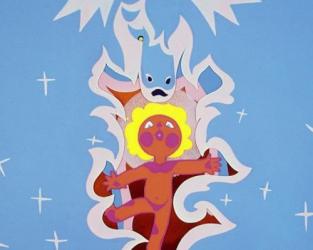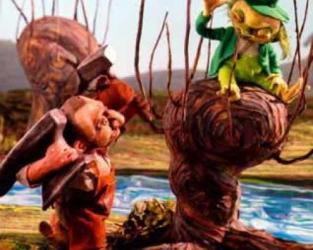Son of the White Mare
Marcell Jankovics | Hungary | 1981 | 81 min | HU | CS, EN sub
In the early 1980s, world-renowned filmmaker and classic of Hungarian animation Marcell Jankovics, the author of such films as Sisyphus (1975) and the three-hour-long opus The Tragedy of Man (2011), made the fascinating feature film Son of the White Mare. The film has recently been deservedly digitally restored. As is his custom, Jankovics attacks the senses of the viewers. He fiercely uses his incredibly sweeping style of vivid animation lavish with numerous metamorphoses and his film is anything but static and minimalist. Almost forty years after its premiere, Son of the White Mare is still a breath-taking colourful spectacle. Its fairy-tale fantastic story is based on old legends of nomadic tribes. A mare gives birth to a human boy with supernatural powers. His task is to set out on a journey full of dangers and enemies and save three princesses. The child will fight giants, monsters and prehistoric creatures. As for the film’s artistic style, Jankovics used deep colours and strikingly stylised drawing influenced by Hungarian ornamentalism. The visual aspect therefore pulsates and transforms itself into various patterns. Together, the Hungarian National Film Archive and the Los Angeles distribution company Arbelos Films have breathed new life into the film which we can now enjoy in 4K definition.


